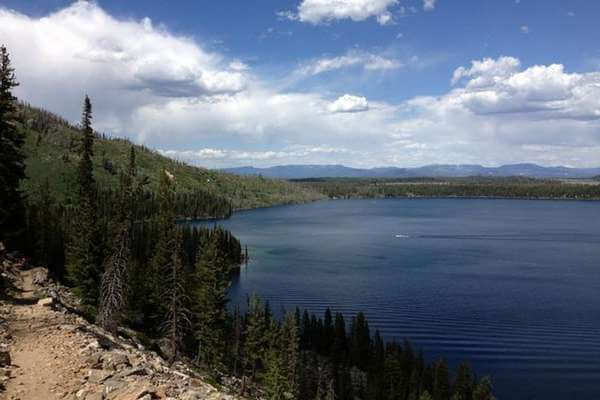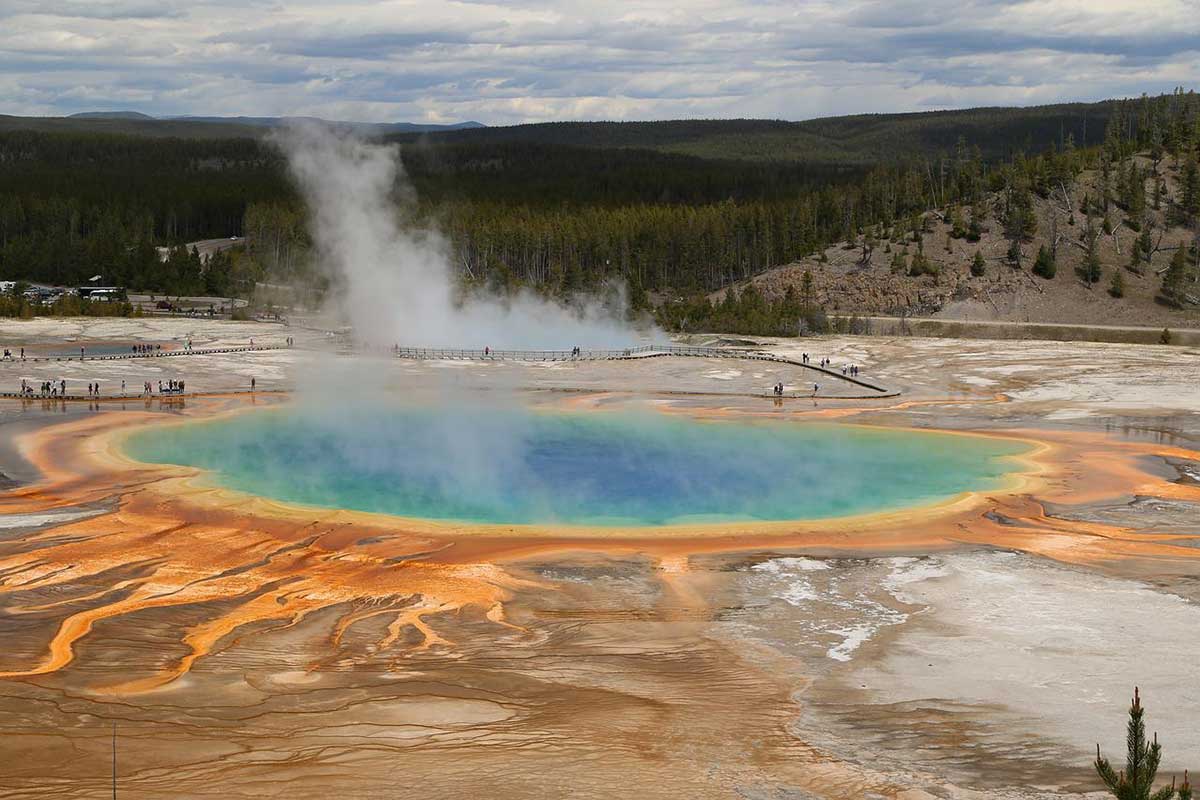There are 63 national parks in the United States and most of those I still need to visit. Yellowstone is certainly at the top of the list. It’s so unique and beautiful with diverse wildlife and landscapes, I can’t wait to see it one day. Here are 23 interesting facts about Yellowstone National Park. Some you may know, but I bet some you didn’t!
23 interesting facts about Yellowstone National Park
1.) Yellowstone is mainly located in the state of Wyoming, with smaller areas in Idaho and Montana.
2.) It consists of 3,437 square miles or 2.2 million acres.
3.) Archeological sites and oral histories show that Native Americans have been in Yellowstone for more than 11,000 years.
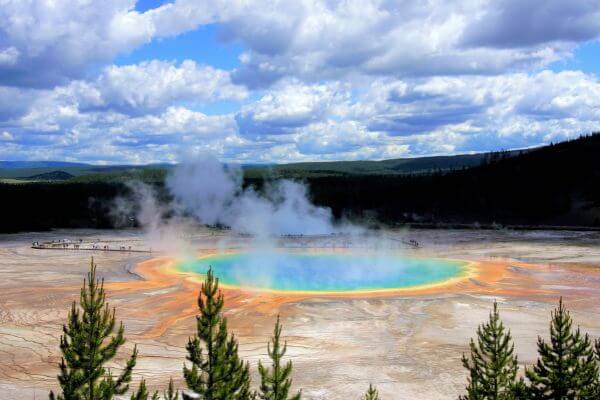
4.) The most well-known group of Native Americans to use the park were the Tukudika (sheep eaters).
5.) The Sheep easters were a Native American tribe that lived in Yellowstone and the surrounding area. Historians believe they were a subgroup of the Shoshone tribe, who would distinguish smaller groups within their tribe using the name of their main food source.
6.) The sheep eaters’ main diet was Bighorn sheep. They would follow the sheep up into the higher elevations in the summer and down into the valley in the winter.
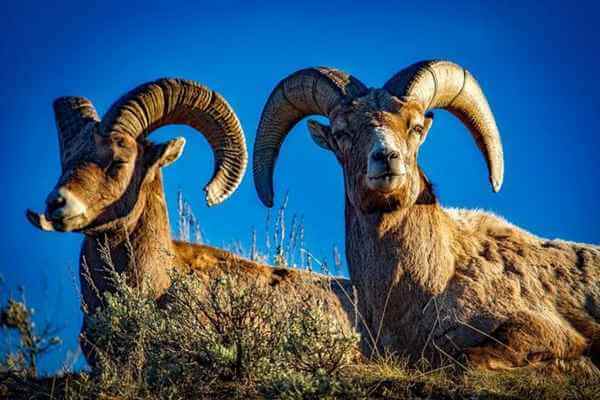
7.) A handful of singular explorers began to visit the Yellowstone area between 1800 and 1830. When they tried to tell people of what they had seen, steam coming out of the ground, water shooting into the air, etc, they were often not believed.
8.) From the 1830s through the 1860s more people (often fur trappers and prospectors) began to come to the region and word was slowly spreading about its natural wonders. Finally in 1870, on the heels of growing rumors and accounts, official expedition parties began to visit Yellowstone.
9.) The Washburn party of 1870 is credited as “discovering” Yellowstone, and their stories and accounts would spur the U.S. Congress in 1871 to send an official exploration party to the area. It is said that Henry Washburn, surveyor-general of the Montana territory and leader of the party, named “Old Faithful” during this visit.
10.) The official government exploration in 1871 was led by Ferdinand V. Hayden. Hayden was a veteran of the civil war and the head of the U.S. Geological survey. Hayden’s group contained geologists, botanists, zoologists, an artist, and a photographer. He sent a 500-page report to Congress and lobbied for government-sponsored protection of the Yellowstone area. Hayden Valley in the park is named after him.
11.) In 1872, then-president Ulysses Grant officially made Yellowstone America’s first national park. However, it took years to begin to develop the protections we associate with national parks today. It wasn’t until 1894 that the Lacey Act was passed, which gave full protection to most animals in the park (excluding wolves and coyotes).

12.) The Roosevelt Arch, located at the north entrance to the park, was built in 1903. However, it was not originally intended to be named after President Theodore Roosevelt. Roosevelt happened to be visiting the park during its construction, and he was asked to place the cornerstone for the arch. It was thereafter referred to as the Roosevelt Arch.
13.) In 1915 the first automobile entered the park, a Ford Model T.
14.) Scientists believe the canyon began to form about 140 – 160 thousand years ago. The hydrothermal activity of the area weakened the rhyolite (a type of volcanic rock) and made it soft. The Yellowstone River eroded these soft rocks and continues to cut the canyon deeper and wider.
15.) The multi-colored walls of the canyon, mainly yellow and pink, are due to the volcanic rock being altered by steam and other geothermic processes.
16.) Yellowstone is NOT named after these yellow-colored canyon walls.
17.) Yellowstone received its name from the Yellowstone River, which runs through the park. In the 1800s French-Canadian trappers visiting the region asked the local Native Americans what the name of the river was. They told them they called it the “rock yellow river”. Translated into french this became “yellow stone”. It is thought the Native Americans called it this due to yellow sandstones found along the banks of the river far downstream of the park.
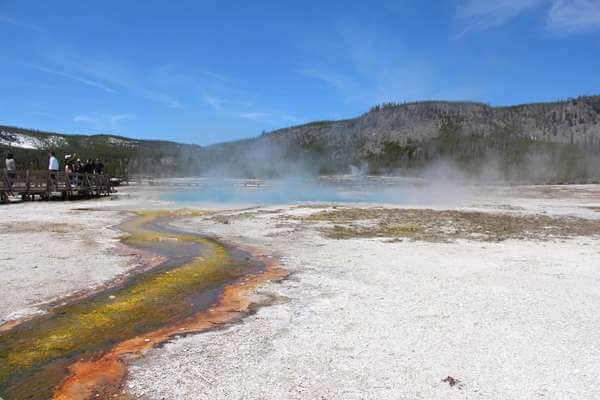
18.) Wildfires are a natural occurrence in Yellowstone. About 35 forest fires a year are started by lightning strikes.
19.) Native to Yellowstone, Douglas Fir trees have a thick outer bark that will protect the inner core of the tree from most fires.
20.) The most common species of tree in Yellowstone, the Lodgepole Pine, have the majority of its pinecones only able to open for seed dispersal when fire melts the resin that holds the pinecone shut.
21.) There are thousands of small earthquakes every year in Yellowstone, however, most are too small for people to feel them.
22.) The Old Faithful Inn, built-in 1904, is the largest log hotel in the world.
23.) Many of Yellowstone’s attractions can only be viewed from a boardwalk due to the delicate nature of the microbes found around hot springs, the scalding temperatures, and unsafe surfaces. Yellowstone has 14 miles of boardwalk trails.
